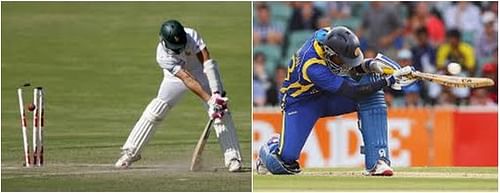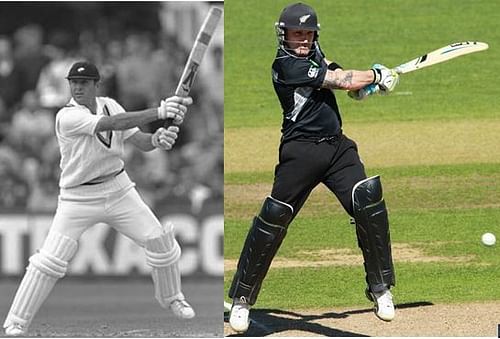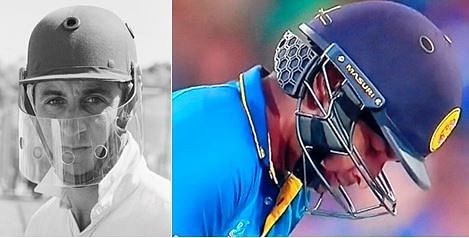
Tracing the evolution of ODI Cricket

When AB de Villiers walked out to bat in an unusual pink South African kit at Johannesburg on 18 January 2015, the West Indians were only just catching their breath. It was the 38th over and the scoreboard read 247/1. Twelve overs later, De Villiers walked back to the hut a content man.
Despite facing just 44 balls, he was now the proud owner of world records for the fastest ODI fifty and fastest ODI hundred. The outcome of the game was a foregone conclusion and the world marveled at the ever increasing possibilities in ODI Cricket.
In a game that is dominated by records and statistics, it is the possibilities that make cricket fascinating. How else could you explain India defending a mere 183 against the mighty West Indies in the 1983 World Cup final, or for that matter South Africa chasing down an improbable 434 against Australia at the New Wanderers in 2006. It is this unrelenting contradiction that evokes curiosity and the ensuing fascination for the sport that propels both players and administrators to drive the transformation.
Cricket is perhaps one of the few games in world sport that has morphed in time despite retaining its fundamental principles. If the creation of ODI Cricket in itself was accidental, the subsequent changes in regulations were introduced to bring change and in more recent times, to sustain the relevance of the format.
And it’s not just the administrators that have aided the metamorphosis. The players are to be credited too – and if the purists have their way – to be admonished, for the evolution witnessed in ODI Cricket. The coaching manuals have always featured the cover-drive, the forward defence, the flick and the hook, but tutors in today’s academies won’t shy away from administering an occasional lesson on the “Dilscoop”.
An accidental genesis
In January 1971, when the third Test match between England and Australia at the MCG was heading for a washout with no play possible on the first three days, the administrators, in an effort to stem the financial losses, decided to turn the final day of the Test into a 40 over a side match with every over constituting 8 balls. The outcome was the genesis of ODI Cricket.
Despite the fact that one-day Cricket competitions were launched in England in 1963, it took this accidental one-day “test” for the Cricket boards to wake up to the possibility of limited overs Cricket between countries. And when subsequent series’ between England and Australia featured limited overs ODI’s, the format began to steadily mushroom at the international stage.
Unlike Football, Cricket was devoid of a “World Cup”. Limited-overs Cricket provided an opportunity for one such global extravaganza the cricketing world was deprived of. As ODI Cricket gained in popularity, the staging of the first World Cup in 1975 ushered in a new era where the significance of ODI Cricket was further cemented.
ODI Cricket – an opportunity that warranted innovation
Unlike Test Cricket, fans loved the brisk run making in the shorter format. Also, there was now a World Cup to be won. And when India got the better of the West Indies in the 1983 final, the cricketing world woke up to the possibilities of upsets – a rarity at the time in Test Cricket.
While Test Cricket provided the vanquished on day one to resurrect on days two and three, ODI Cricket didn’t offer that luxury. One day was all that a team had to put on a show of might and teams now knew that should they get their acts together and have a good day, the mighty could be upstaged.
The search for that elusive day of success drove captains to work the balance of a side. For the West Indian sides of the 70s, it was a simple mantra – four supreme fast bowlers and top order batsmen with earth shattering skill.
For sides that didn’t quite possess this formula, innovation was called for. Through cricketing history, all-rounders were a unique breed of gifted cricketers that could don multiple hats. ODI Cricket was tailor-made for such individuals. Kapil’s “Devils” from 1983 was a side studded with all-rounders and they showed the world the possibilities of the genre.
Soon enough, all-rounders became the game-changers in ODI Cricket. India had Kapil Dev, Mohinder Amarnath and Ravi Shastri through the eighties. If Pakistan had the legendary Imran Khan, New Zealand had Richard Hadlee. England for their part needed just the all-conquering Ian Botham. Each of them would go on to craft great careers and play crucial roles in ODI Cricket for their countries.
Batting might versus bowling wisdom
As 60 overs Cricket was cut short to 50 overs a side, a new attacking revolution began to emerge. Opening batting was always about getting set, buckling in for the long haul and then accumulating the runs. But with the introduction of the 30-yard circle, all of a sudden, opening an ODI innings was about maximising in the first 15 overs with the fielders deployed in the in-field.
Kris Srikanth brushed his nose and shook his head in utter delight as this change seemed tailor-made for his style of play. Ian Botham, previously devastating in the middle-order, was drafted in to hit a few “biggies” at the outset to kick-start the innings. And who can forget what Sanath Jayasuriya did with repeated success. ODI Cricket in the nineties was decided more often than not on the outcome of the first 15 overs.
And just when the batsmen began to celebrate their new found abilities to dominate, the dwindling breed of bowlers decided to up the ante. A hitherto unknown weapon began to emerge – the slower ball.
If Ian Botham bowled it with a break in his action, most others bowled it with an off-cutter. But it was the nondescript Venkatesh Prasad who carved a niche for himself in this segment. His slow leg-cutters, bowled with an unchanged action, foxed many a batsmen in world Cricket. Such was his control over the delivery that for a while, Mohammad Azharuddin used him as the “death bowler” and Prasad complied with glee.
Not ones to be left behind, the fielders conspired with the bowlers. The outcome was a South African side that pioneered the art of fielding and Jonty Rhodes was at the heart of this revolution. Slowly but surely, fielding assumed prominence. It was no longer a necessity but a priority.
New arsenals emerge
But as fate would have it, Cricket was somehow always about putting runs on the board. From Cricket on the streets to the ODIs, the game constantly evoked scenes of bat-wielding warriors carting hapless bowlers till the cows came back home. If the bowlers seemed to have worked out a weakness, the batsmen seemed to pull a rabbit out of the hat.
When the legendary West Indian pacers discovered that speed was an ally that won them battles on the pitch, Sunil Gavaskar swore by his technique. And in the seventies and eighties, those not blessed with technique sought refuge behind helmets with fibreglass visors.
As helmets increasingly found their way into kit bags and became another addition to the batting arsenal, the bowlers seemed to have been caught on the back foot again. And with the administrators soon limiting the number of bouncers in an over, the balance was clearly shifting again – much to the dismay of the bowling community. But it took a menacing Pakistani duo to usher in an almost forgotten art form to rein in the batsmen.
The Yorker is one of the hardest balls to bowl in Cricket, but Wasim Akram and Waqar Younis seemed to be able to produce it at will. Very few tasted success in the manner that they did as the duo produced yorkers like a trump card when the situation demanded it.
Similarly, reverse-swing became an invention that they practically owned. Who can forget the two mind-boggling deliveries from Akram to hoodwink a clueless Allan Lamb and Chris Lewis in the 1992 World Cup final? If the ball to Lamb moved away, the in-swinger that castled Lewis moved into him from miles outside the off stump.
Wickets tumbled and helmets – and egos – were dented like never before. Allan “White Lightning” Donald was another speedster that emerged alongside Akram and Younis to torment oppositions the world over. Together, they formed the crème-de-la-crème of ODI fast bowling in the nineties.
The 1990s and 2000s was also a period that witnessed a batting revolution. As bats grew heavier and seemingly wider, stroke making in ODI Cricket mutated into a hitherto unknown art-form.
The era belonged to the batting wizards in Brian Lara and Sachin Tendulkar. Both maestro’s delighted in their own unique way. Sachin introduced an array of strokes – the paddle sweep, the full-faced straight drive, the right-wrist-over-the-left flick to square leg and the upper cut among others. Meanwhile, Lara wore flamboyance on his sleeve as he lit up the ODI scene with his stroke play.
Played for the masses with skill at the forefront
A torrent of runs was scored and totals grew to mammoth proportions. There was money to be made by packing the stands and luring in the sponsors alike. After all, Kerry Packer had written the commercial algorithm to monetise Cricket way back in 1977 with his World Series of Cricket. It was now only a matter of deploying the same template.
Slowly but surely, ODI Cricket was being played to the masses. Brewing batting friendly pitches became common place and every failed attempt to curtail a marauding batting side resulted in the phrase, “it’s a batsman’s game after all”.
Despite the evolution, ODI Cricket continues to lure the masses to the stadiums. Coloured kits, superstars bathed in floodlights and the white ball sailing to the stands makes for enthralling viewing.
Amidst the fanfare, the administrators huddled quietly in nondescript meetings to usher in another round of change to ODI format. This time, it’s five fielders outside the 30-yard circle between the 41st and the 50th overs; no compulsory close-in catchers for the first 10 overs; no batting power-plays between the 15th and 40th overs.
That ODI Cricket has evolved since its humble origins is all but a foregone conclusion. While some seem to critique the constant change of rules, others embrace it for change as they know is “the only constant”.
All said and done, when matters of ODI evolution come up for deliberation, rather than rant over rule changes, it’s the player induced skill-based changes that one needs to hail. For it’s their ever evolving skill and ability to adapt to change that will keep ODI Cricket relevant while continuing to entertain the hordes of fans and believers the world over.

